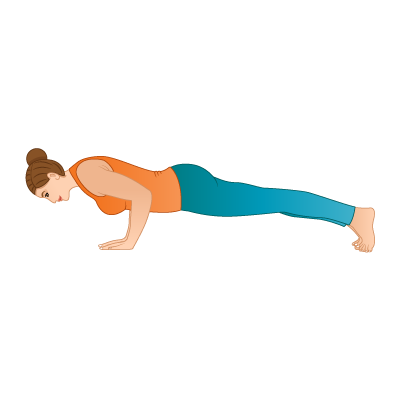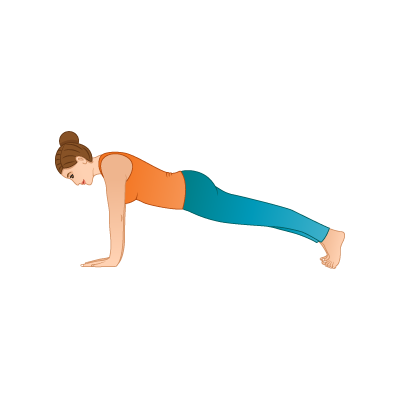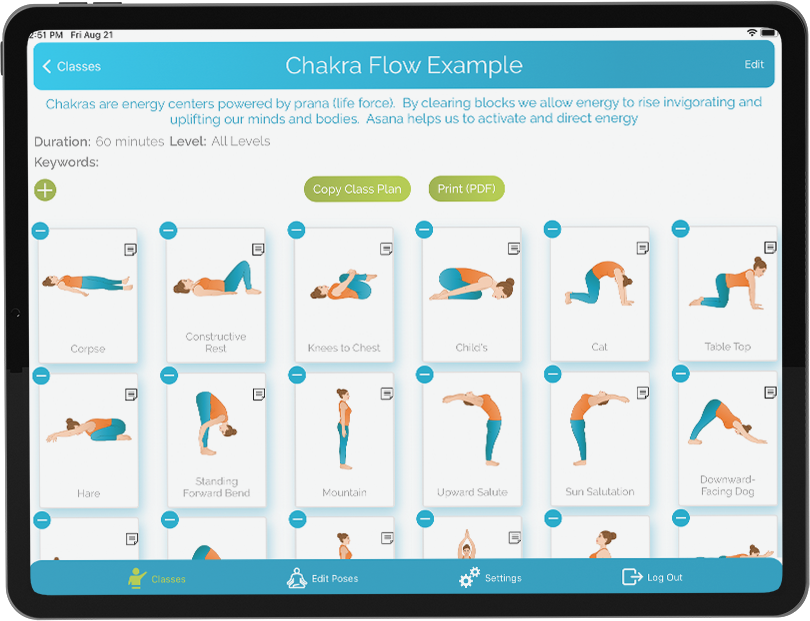How To Plan A Chakra Themed Yoga Class
April 21, 2017 | 4 min read
There are seven chakras in the human body that act as the energetic conductors of our being. Through these seven chakras, all of our energy flows. While energy is meant to flow through these chakras, it can also become blocked. This blocked energy can lead to illness and unrest when not treated.
One of the best ways to address the chakras is through a chakra based yoga practice. Whether you plan to move through all seven chakras over the course of a class or simply focus on one, planning a chakra based class can be intimidating.
While the energetic or subtle body cannot be measured the way your heart rate can be measured, you can notice the effects of a chakra practice immediately.
Research The Chakras and Their Elements
It is important to have a deep understanding of the chakras, where they exist in the body, what they govern, and the element they are linked to. Having a deep understanding will allow you to more easily balance the chakras and to create a class that is effective in removing energetic blockages.
- Root Chakra (Muladhara) – Earth Element that governs feelings of survival and belonging.
- Sacral Chakra (Svadhisthana) – Water Element that governs fertility, creativity, fluidity and sexual organs.
- Navel Chakra (Manipura) – Fire element that governs self-esteem, courage and confidence.
- Heart Chakra – (Anahata) – Air Element that governs compassion, forgiveness and acceptance.
- Throat Chakra (Vishuddha) – Ether Element that governs communication.
- Third-Eye Chakra (Anja) – Light Element that governs insight and wisdom.
- Crown Chakra (Sahasrara) – Governs your ability to understand the spiritual realm beyond the physical body.
Determine Your Direction
As mentioned above, you can move through all seven chakras in a class or simply choose to focus on one. Either way, this is the first place you must start. Determining which direction you will take the class in will help you to accomplish a successful class plan. There are benefits to both courses and you shouldn’t feel limited to only do one or the other. Instead, choose what is currently speaking to you.
Find A Theme
The first five chakras are linked to elements (fire, earth, water, air, and ether) which can assist you in determining a theme. If for instance, you have chosen to focus on a single chakra, like the Navel Chakra (Manipura), you are tuning into the fire element. You can then be able to create a theme around the element of fire, which helps to drive our levels of energy and self-confidence. This theme can then be strung throughout the practice, showing up in every element from the type of Pranayama you choose to begin practice with all the way to how you finish the class in Savasana. Similarly, if you have chosen to address each chakra, you can thread your theme throughout each chakra and the elements and feelings they represent.
Pick Proper Postures
Yoga postures should be chosen for their ability to stimulate the chakra that you are focusing on. For instance, bringing focus to the root chakra which is linked to the earth element, you should choose postures that will assist your students in feeling grounded. Postures like Vrksasana (Tree Pose) or Uttanasana (Standing Forward Bend) will help to emphasise and balance the energy of the root chakra.
Allow For Rest
Any work done on the subtle energetic body can stir up emotions. It is incredibly important to plan in plenty of rest time and an ample amount of time in Savasana (Corpse Pose) so that students don’t leave feeling overwhelmed or imbalanced.
Following a few simple steps, you will be able to plan a chakra class that assists your students in unblocking stagnant energy and working through experiences that rest within the subtle body. Being mindful of the powerful nature of this practice will allow you to offer something that is truly beneficial.
Click here to download a free Chakra Theme Yoga Class Plan
Looking for more inspiration for your next yoga class? YogaClassPlan sequence builder gives you access to 7000+ shared class plans in your hands. You can create your own completely new class sequences by choosing from 500+ pose illustrations. Simply drag and drop poses to create your routine, add class plan details such as duration and level, and share the class plan with your students. Sign-up for a 15-day YogaClassPlan free trial today.
Posted in Methodology, Teaching Resources, Teaching Tips




